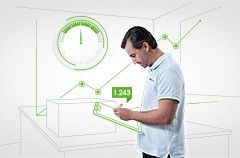
Semi-automated Liquid Handling
Fast, Intuitive 96 and 384-Well Pipetting Systems
A semi-automated liquid handling system is the perfect solution for labs needing a workstation that can simultaneously pipette up to 96 samples. Designed for high and medium throughput workflows, the Rainin MicroPro, BenchSmart 96, and manual Rainin Liquidator 96 scale-up 96- and 384-well plate work with multiple trays to efficiently use plates, reservoirs, and tips. These fast, intuitive automated pipetting systems deliver accuracy and consistency for various applications.
Expert Service – Tailored to Fit Your Pipetting Needs
METTLER TOLEDO supports and services your pipettes through their entire life-cycle, from good pipetting techniques to preventive maintenance and calibration to equipment repair.

Order Pipette Service & Calibration
FAQs and Resources
What are pipetting stations?
Pipetting stations are benchtop liquid handling systems that allow a user to pipette into 96- and 384-well plates with far fewer steps and greater accuracy than when using single, 8- and 12 multichannel pipettes.
Pipetting stations range from manual and semi-automated to fully automated liquid handling options. In general, manual and semi-automated stations are more appropriate for research labs, while fully-automated liquid handling systems are more common in production environments. As a general rule, labs that prepare more than five plates a day will benefit from a pipetting station.











